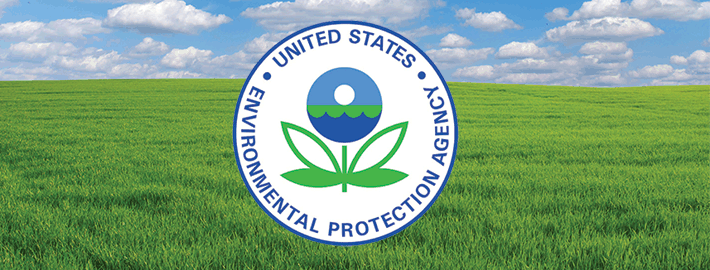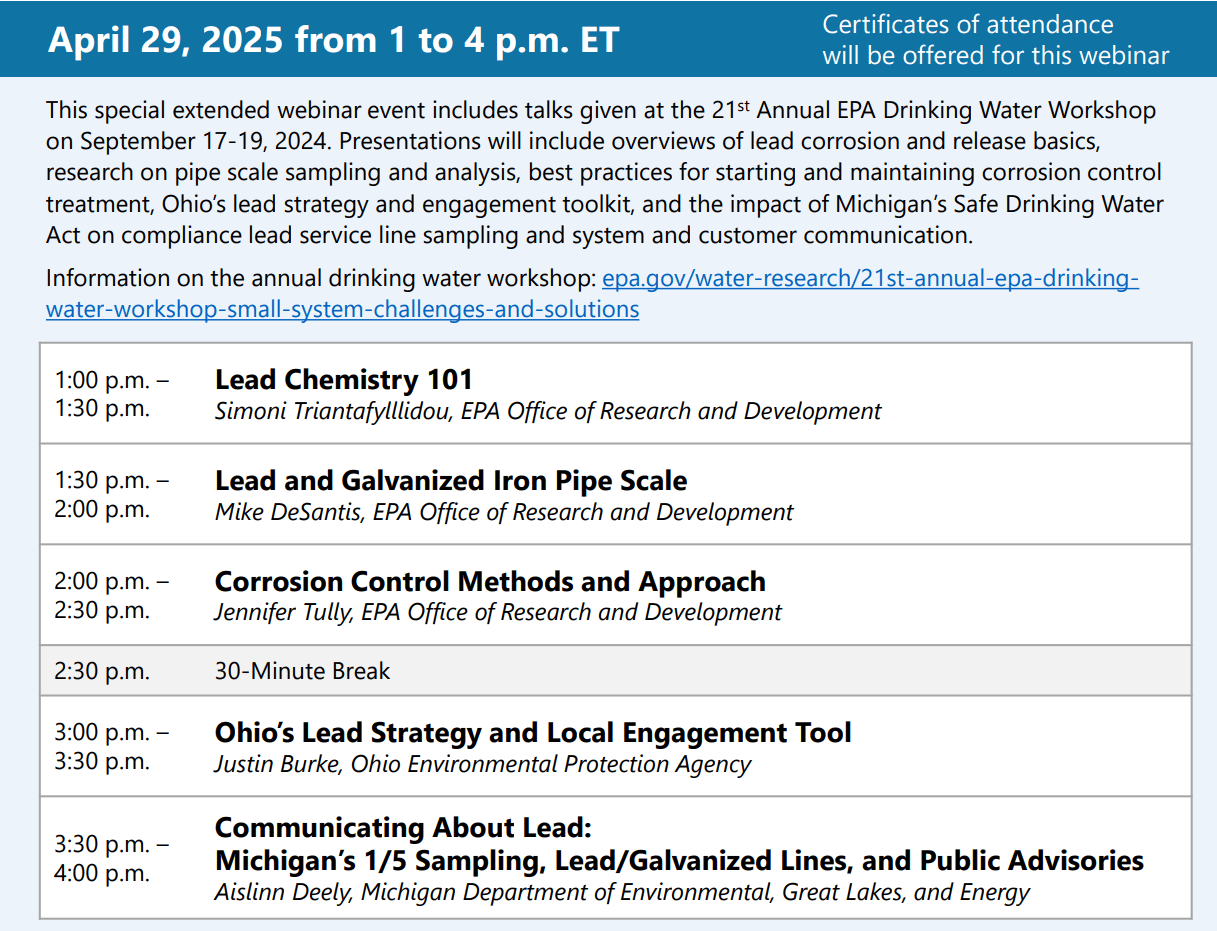
Connecting Soil Health and Water Quality in Agricultural Systems
VirtualIn this presentation, the relationship between soil health practices, such as the use of cover crops, and water cycling will be highlighted.

In this presentation, the relationship between soil health practices, such as the use of cover crops, and water cycling will be highlighted.

This extended training webinar event includes talks given at the 21st Annual EPA Drinking Water Workshop held on September 17-19, 2024.

Retaining water in the soil is critical to ensure that farmers can take advantage of rainfall when it is in excess and can hold onto it when it is not. In this presentation, the relationship between soil health practices, such as the use of cover crops, and water cycling will be highlighted.

The EPA’s Homeland Security Research Program has been working to leverage AI and enhance disaster readiness for several years.

The Drinking Water State Revolving Fund (DWSRF)—a federal-state partnership between EPA and states—can help communities improve their drinking water infrastructure by replacing lead service lines (LSLs) and reducing exposure to emerging contaminants, including PFAS.

While PM infiltration in single family homes has been relatively well studied, less is known about how much comes indoors in commercial and nonresidential buildings (such as libraries, fitness centers, and schools).

The degradation of aquatic ecosystems can have widespread impacts on both aquatic ecosystem function and aquatic organism health.

The webinar will review the risk communication and human-centered design strategies used to develop the Flooded Homes Cleanup Guidance website and provide an overview of the website and its key features.

This presentation will introduce the recent EPA report Risk-Based Framework for Developing Microbial Treatment Targets for Water Reuse.

Attendees will have the option to receive a certificate of attendance. Acceptance is contingent on organization requirements—EPA cannot guarantee acceptance.

The EPA Sanitary Survey App for Marine and Fresh Waters is a free tool that waterbody managers can use to record waterbody data for evaluation.

The ubiquity of microplastics in the environment is an emerging concern. These small plastics (